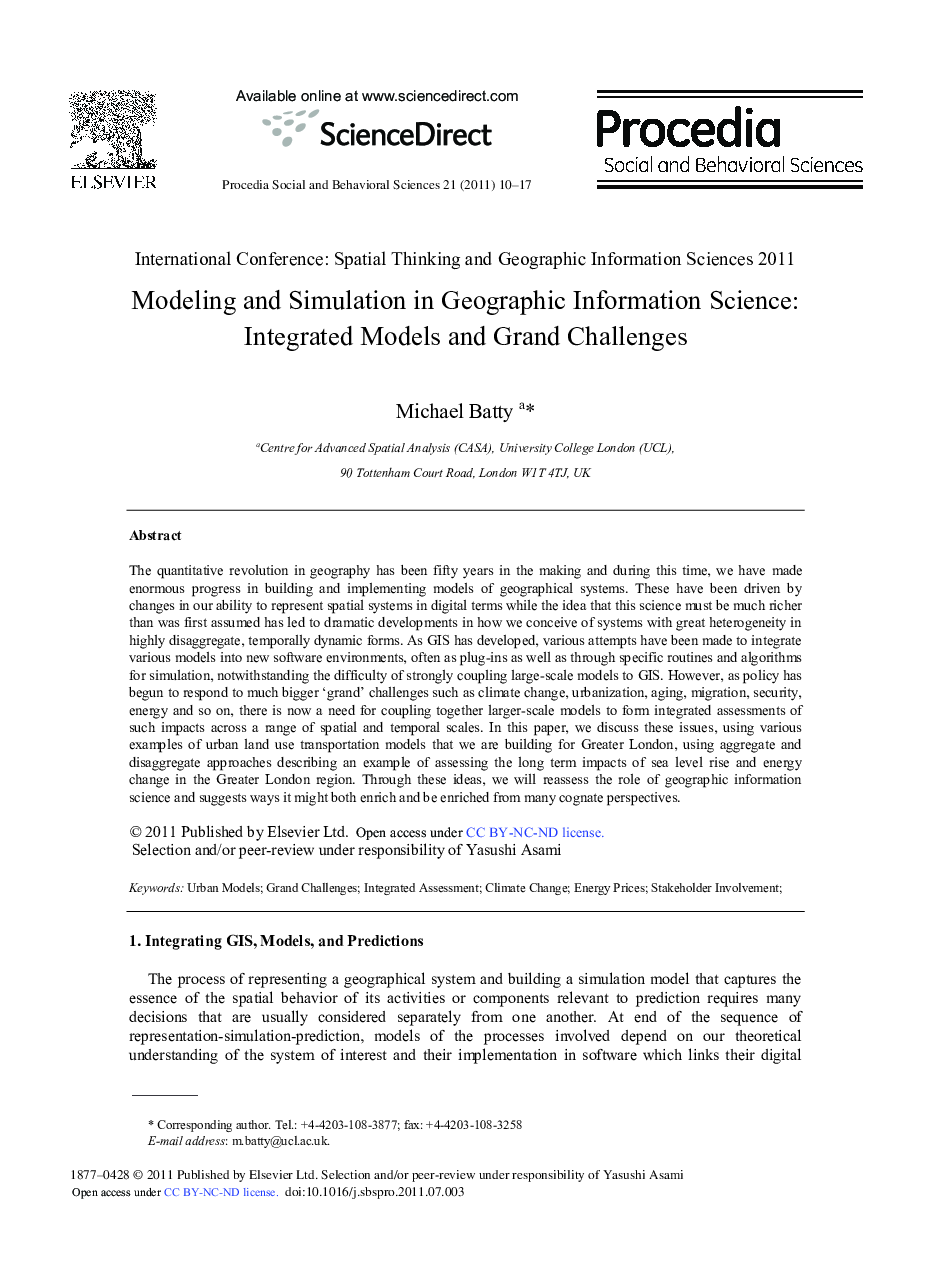| Article ID | Journal | Published Year | Pages | File Type |
|---|---|---|---|---|
| 1123920 | Procedia - Social and Behavioral Sciences | 2011 | 8 Pages |
The quantitative revolution in geography has been fifty years in the making and during this time, we have made enormous progress in building and implementing models of geographical systems. These have been driven by changes in our ability to represent spatial systems in digital terms while the idea that this science must be much richer than was first assumed has led to dramatic developments in how we conceive of systems with great heterogeneity in highly disaggregate, temporally dynamic forms. As GIS has developed, various attempts have been made to integrate various models into new software environments, often as plug-ins as well as through specific routines and algorithms for simulation, notwithstanding the difficulty of strongly coupling large-scale models to GIS. However, as policy has begun to respond to much bigger ‘grand’ challenges such as climate change, urbanization, aging, migration, security, energy and so on, there is now a need for coupling together larger-scale models to form integrated assessments of such impacts across a range of spatial and temporal scales. In this paper, we discuss these issues, using various examples of urban land use transportation models that we are building for Greater London, using aggregate and disaggregate approaches describing an example of assessing the long term impacts of sea level rise and energy change in the Greater London region. Through these ideas, we will reassess the role of geographic information science and suggests ways it might both enrich and be enriched from many cognate perspectives.
